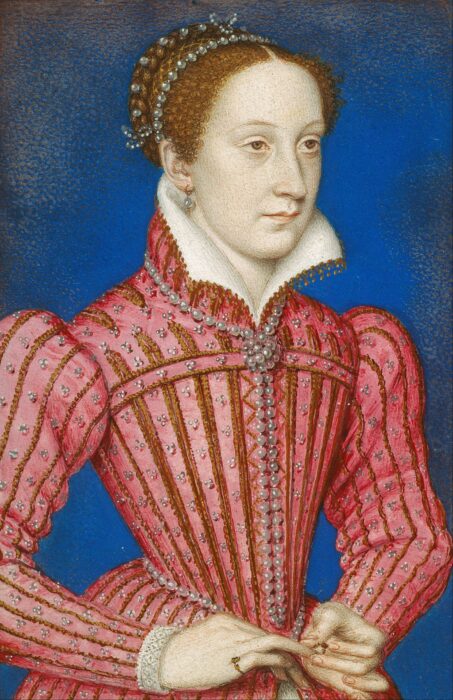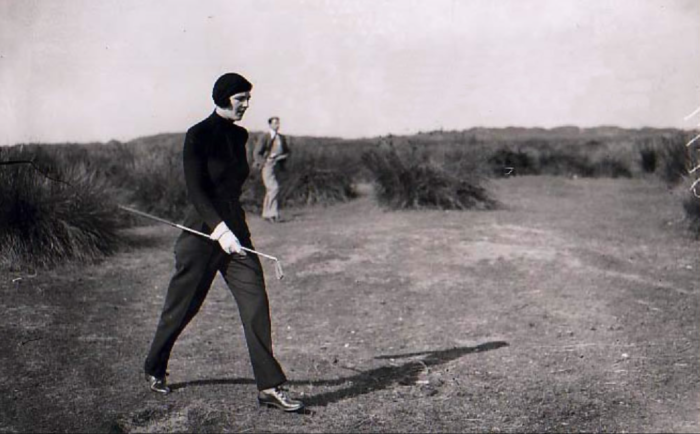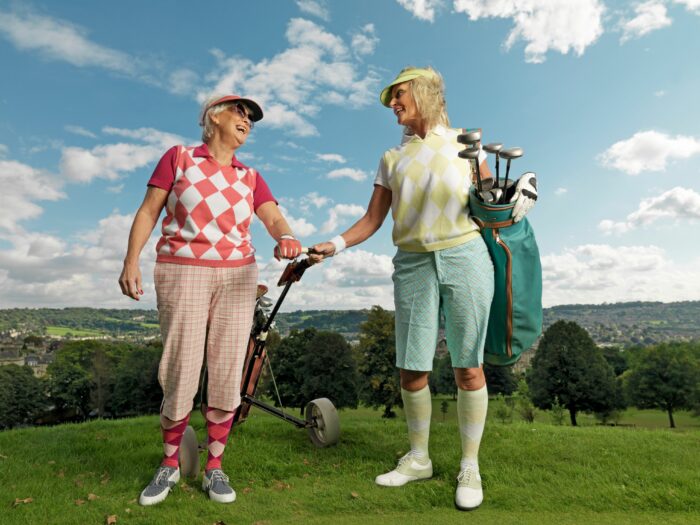The history of golf attire in the UK
Do you know the history of golf attire in the UK? Here, Kiran Kanwar PhD takes us through this, from Mary, Queen of Scots to the present day, and concludes a code, from decorum to performance, can make sense but, ideally, a balance should be struck between not offending those who want them and not excluding those who do not.
A question that comes up frequently, and from several sectors within golf, is whether a golf club, a specific tour of professional golfers, or even a college golf team, should have a dress code.
What is the purpose of a dress code, and what, historically, have been the various modes of dress for men and women?
Mary, Queen of Scots, who was Queen of Scotland from 1542 to 1567, was the first female golfer known by name. She is often pictured playing golf in a wide gown, with for all we know, a farthingale made of whalebone or some other stiff material under it, to help maintain her dress’ flare. The outfit features long, narrow sleeves, a thick, fur-lined, puff-sleeved jacket, and what appear to be white gloves.

Mary, Queen of Scots. Image by François Clouet. To see a 1905 image depicting what she might have looked like playing golf, click here
In the Victorian era (from 1837 onwards) women wore stiff, structured crinoline petticoats, as well as with wired bustles that supported the back of their dresses. Such garments were, according to Scottish Golf History, “Somewhat constricting and gave little opportunity for a free swing”.
Later, during the Edwardian era, the founder of the Ladies Golf Union, Isette Pearson, a female golfer who marched to the tune of her own drummer, wore a full-length wide skirt, a double-breasted men’s style jacket on top, and a white collared shirt with a bow tie! While her individual style was rather severe-looking, typical female golfers of the time simply wore white blouses with long, black skirts and straw hats. Basically, female dress of the time was dictated by the fact that women were not to appear out-of-place by being conspicuous. In fact, it was a woman (May Hazlett, winner of three national Championships) who claimed to dislike “shortest narrow bicycling skirts”.
No wonder then, that even by the end of the 19th century, a Scottish judge – Lord Moncrieff – suggested that women should “drive the ball no further than 70 or 80 yards.”
Eventually, at the end of the 19th century, women began to wear the same flat caps as men, and their skirts finally became slightly shorter (showing the ankles, horror of horrors). This helped to make the problem of mud on skirts less of an issue. By the end of the first quarter of the century, women such as Joyce Wethered wore the same flat cap, a sweater and a narrow skirt to just below the knees. Her shoes, from many pictures, appear to be either strapped or Oxford-style, always with perhaps two-inch heels. However, did she manage the forced forward lean at set-up with those heels? Skirts only began to be slimmer and thus easier to swing in in the 1920s.
The first time a female golfer was seen in trousers was when Gloria Minoprio wore ‘slacks’ to play in the English Women’s Amateur championship in 1933. It apparently caused quite a stir, and the outfit is now preserved at The R&A Golf Museum in St. Andrews.

Gloria Minoprio. Image from X
What were golf fashions or dress codes for men in the early days of golf? Golf outfits included heavy tweed jackets to protect golfers from the chilly weather of Scotland. They were accompanied by starched collars, knickerbockers and, underneath them, long socks and sturdy shoes.
According to Scottish Golf History, in the early days of the sport as it was played in Scotland, people wore their normal clothes, although in the 18th and 19th centuries, male golfers wore brightly coloured jackets so people would know that golfers – and flying golf balls – were around.
In the Victorian era, men typically wore tailored coats, high-collared shirts and knee-length knickers. In the 1920s, often known as the ‘roaring 20s’, golf apparel had evolved to include flat caps, neck ties, single-breasted jackets, plus fours (baggy knickers worn to just below the knee) and what was referred to as ‘spectator’ shoes. Upon looking closely at pictures from those days, the shoes appear to have slight heels, perhaps endangering dynamic balance in the swing!
It was only in the 1950s that golf apparel began to look anything like what one might recognise as something golfers might wear. Loose-fitting knitted shirts with fairly large, self-fabric collars, lightweight, colourful, wider-bottom trousers and Oxford shoes (lace-up shoes with a low heel) came into fashion.
In the 1970s, golf fashion was greatly influenced by what the professional golfers of the time wore, and included colourful trousers, often with a houndstooth design. They were paired with golf shirts – usually with a pocket on the left side. The pocket idea was soon discarded because it was considered a hindrance for right-handed golfers.
It is only in more recent decades, as fabric-science has evolved, that male golfers wear tucked-in polo shirts in fabrics other than cotton, such as moisture-wicking polyester or spandex blends.
Many shirts are even infused with sun-protection chemicals. Male golfers today also wear well-ventilated pants of stretchy fabric, with an inevitable belt at the waist.
We can see that golf fashions, ever since earliest times, often had a reason for their existence. To warn people of wild shots, to make females conform to dictates of modesty or to be practical for prevailing weather conditions. Today, however, men’s dress code is very strictly enforced in many settings, while women’s is not enforced to the same extent. No reasons are ever proffered.
According to an April 2022 article in Golf Monthly, the author believes that an important reason why golf needs a dress code is to establish or maintain its identity. The author also believes a suitable dress code should appeal to younger golfers.

An important question about modern golf dress code, then, is why the organisations governing the sport should be responsible for what golfers wear? At an extremely strict and unyielding level at that? Why can it not be determined by prevailing fashion trends, as long as they are golf-specific fashion trends and always keep performance, comfort and safety in mind above all else?
As far a performance goes, the length of trousers worn truly does not matter. As long as the fabric has some ‘give’ in it, mainly for walking, that should suffice. Mainly because the lower body has large movements that are not very dependent on garment fabric. Comfort, however, might dictate shorter lengths in hotter climates and longer ones when it is cold. Additionally, individual golfers should have a choice, just as they do with the clubs they use or the cap, glove and shoes they wear.
With respect to safety, we might consider how metal shoe spikes were arbitrarily replaced by soft spikes. The only rationale provided was that a course requires extra maintenance with the hard shoe spikes. The fact that there is less slippage on wet grass with metal spikes and much research of the time showed how those spikes increased ball distance too, held no water for the powers-that-be.
In which case, why should golfers not wear gym shorts or hoodies or jeans? After all, golf fashions have changed over time and not always because they were mandated. Some decorum is definitely called for, especially as golf has such a long and storied history. It would be politic to maintain a bit of the tradition of a sport that has always been associated with etiquette and fair play, including a concern for other golfers.
Some less-rigorous dress code might be acceptable to all age groups and socio-economic statuses, and serve to not offend those who may, even today, believe that a semblance of dress code is essential.
LPGA Master instructor Kiran Kanwar has a PhD in kinesiology (biomechanics and anatomy) and wrote a thesis on causes of golf swing-related injuries. Kiran is also chair of Stanton University’s golf department. Visit her website www.YourGolfGuru.com















Let me tell You a sad story ! There are no comments yet, but You can be first one to comment this article.
Write a comment